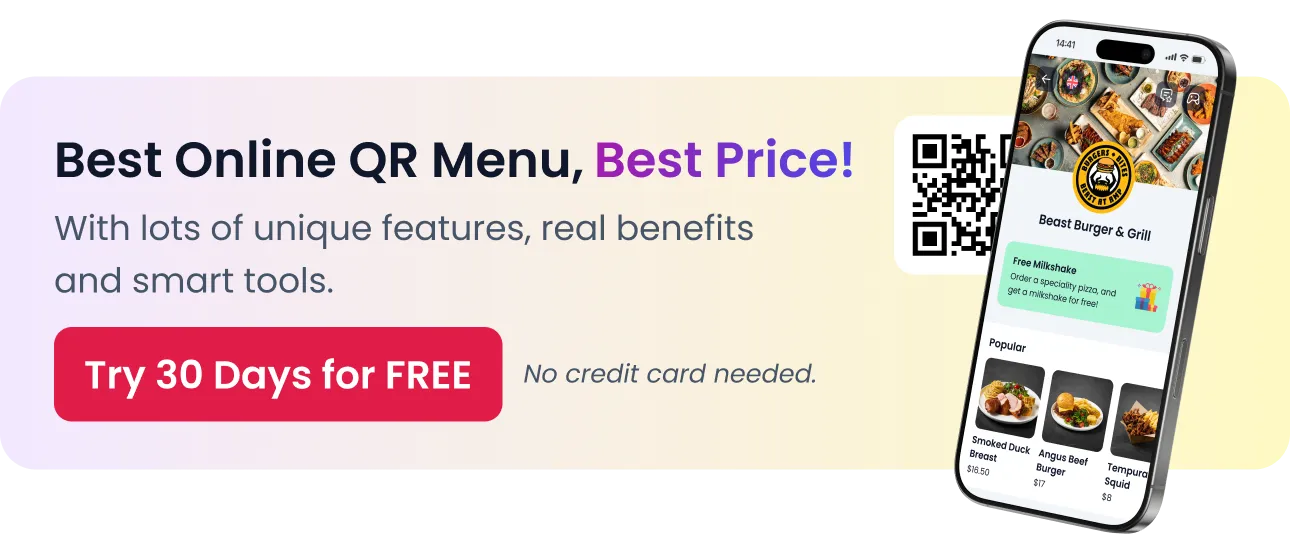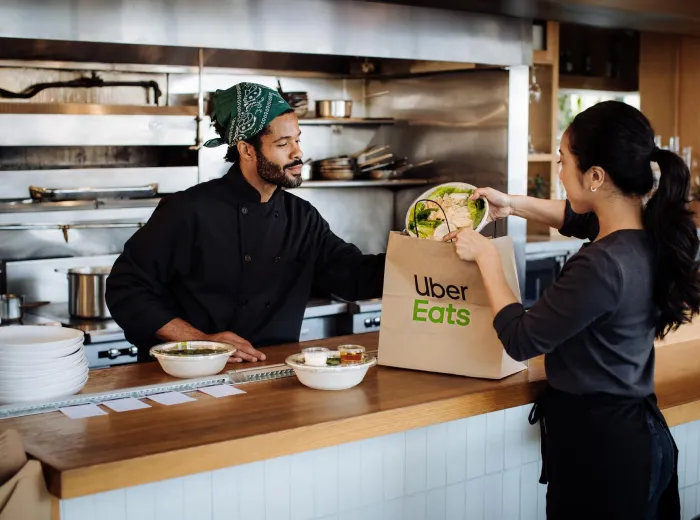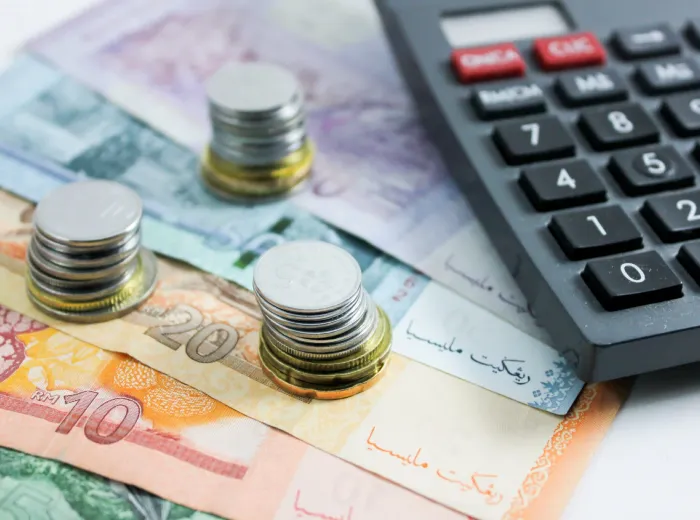
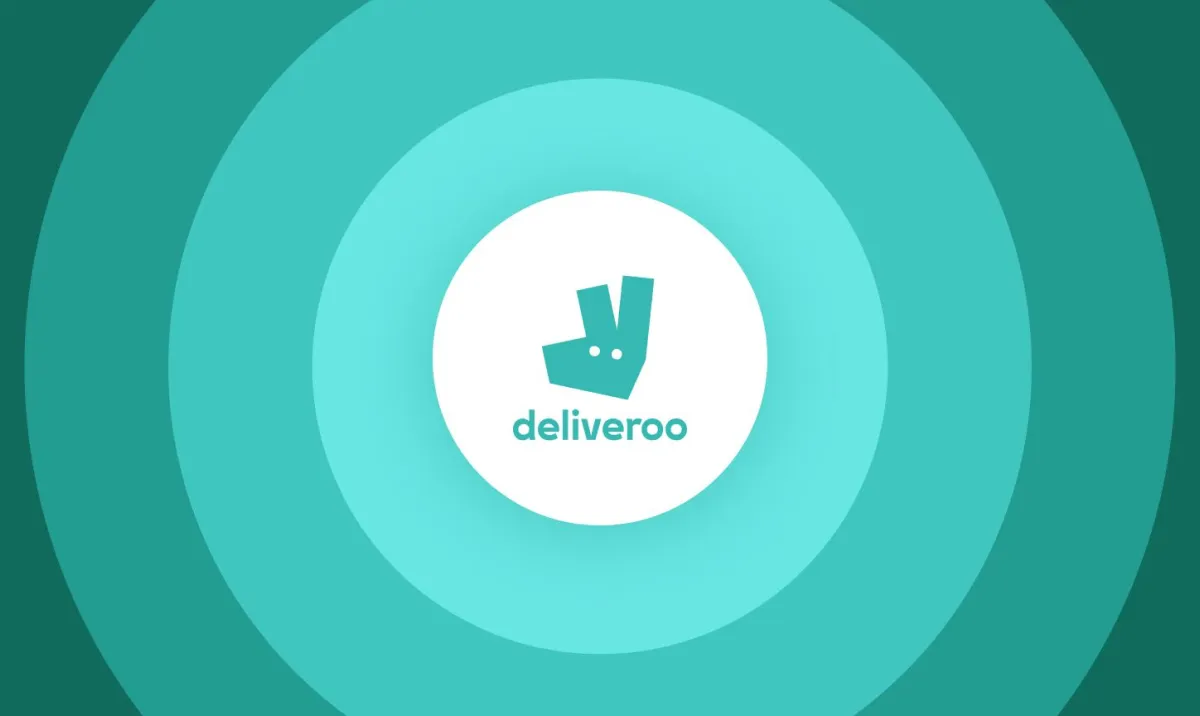
How to Increase Orders on Deliveroo? | Tips for Restaurants
If you’re running a restaurant, cafe, or takeaway, chances are high that Deliveroo plays a role in your business. Whether it’s a core revenue stream or simply a way to reach new customers, Deliveroo can open doors — but only if you know how to use it to your advantage.
Many restaurant owners mistakenly think signing up for Deliveroo is enough to start seeing orders roll in. In reality, competition is fierce, and customers have endless choices at their fingertips. Success on the platform isn’t just about cooking good food — it’s about positioning, presentation, pricing, and promotion.
This guide is designed to show you exactly how to increase your orders on Deliveroo. I’ll walk you through practical, battle-tested strategies I’ve seen work for dozens of restaurants — from menu tweaks and pricing tactics to smart marketing moves that actually boost sales. No fluff here. Just actionable advice that can help you stand out in a crowded marketplace and grow your delivery revenue steadily.
Why Deliveroo Matters for Restaurant Growth
Deliveroo isn’t just another delivery app—it’s a powerful sales channel that can drive meaningful revenue for restaurants of all types. Whether you run a small local cafe or a busy multi-unit operation, understanding why Deliveroo matters (and how to leverage it) is key to long-term growth.
Here’s a breakdown of why Deliveroo plays such a significant role in restaurant success today.
The Role of Food Delivery in Today’s Dining Landscape
- Consumer habits have shifted dramatically—many customers now prefer ordering in over dining out.
- Busy lifestyles, convenience, and easy-to-use apps have made food delivery part of daily routines.
- Restaurants that ignore delivery risk missing out on large segments of potential customers.
Deliveroo makes it easier for restaurants to tap into this growing demand without having to build their own delivery infrastructure. It’s no longer optional—it’s essential for many brands.
Deliveroo’s Market Position and Customer Base
- Deliveroo holds a major share of the food delivery market in many cities across the UK, Europe, and beyond.
- Its user base includes both everyday diners and high-frequency customers who regularly order meals.
- Many Deliveroo users discover new restaurants through the app, meaning it doubles as a marketing platform.
Restaurants that optimize their Deliveroo presence can get in front of thousands of potential customers who may never have otherwise found them.
Why Some Restaurants Thrive While Others Struggle on the App
- High-performing restaurants treat Deliveroo as an active sales channel, not a passive one.
- They invest time in menu optimization, promotions, reviews, and operational speed.
- Struggling restaurants often neglect photos, pricing strategy, or customer engagement.
In many cases, it’s not the food quality that sets successful restaurants apart—it’s their approach to delivery-specific marketing and execution. Deliveroo rewards restaurants that play the game well.
By understanding these dynamics, you’ll see why investing effort into Deliveroo isn’t just worthwhile—it’s necessary for sustainable restaurant growth today.
Crafting a Menu That Sells on Deliveroo
Creating a menu for Deliveroo isn’t the same as designing one for your in-house diners. In the delivery world, convenience, speed, and visual appeal drive orders — not just taste. Your goal is to build a delivery-friendly menu that maximizes both sales and profitability while ensuring a great customer experience.
Here’s how to craft a Deliveroo menu that works hard for your business.
Focus on High-Margin, Delivery-Friendly Items
- Prioritize dishes that maintain their texture and quality during transit.
- Avoid menu items that are likely to arrive soggy, cold, or messy.
- Choose foods with higher profit margins to offset Deliveroo’s commissions and delivery costs.
Think about items like grain bowls, pasta dishes, burgers, and curries — they tend to travel well and can command solid price points. Salads with delicate greens or complex plating? Probably best left off your delivery menu.
Bundle Deals and Combos That Boost Order Value
- Offer thoughtfully designed meal bundles that encourage larger orders.
- Include add-ons like drinks, sides, or desserts for easy upselling.
- “Family meals” or “sharing platters” can attract group orders and increase average spend.
Bundles are effective because they simplify ordering decisions for customers and push up your ticket size naturally — all while making the meal feel like better value.
Simplify Choices to Speed Up Ordering
- Limit your online menu to your top-performing dishes.
- Avoid overwhelming customers with too many options.
- Group dishes into clear categories (e.g., “Bestsellers,” “Vegan Favourites,” “Quick Bites”).
A streamlined menu isn’t just easier for customers to navigate — it also helps your kitchen operate faster and more efficiently during busy delivery hours. Less confusion equals better reviews and more repeat business.
By focusing on profitable, delivery-friendly dishes, bundling strategically, and simplifying your offerings, you’ll make your Deliveroo menu work smarter — driving both sales and customer satisfaction.
Nail Your Photos and Descriptions
When it comes to Deliveroo, your photos and menu descriptions are your sales team. Customers can’t smell or taste your food through their screens — they rely entirely on what they see and read. That’s why top-performing restaurants on Deliveroo invest time and effort into stunning visuals and enticing descriptions that help their dishes stand out.
Here’s how to get this crucial part right.
Why Great Photos Are Non-Negotiable
- Customers often scroll quickly — a strong image is what makes them stop.
- Dishes with high-quality photos consistently outperform those without.
- Photos should look appetizing, realistic, and true to how the dish will arrive.
Key tips for strong Deliveroo photos:
- Use natural lighting to avoid harsh shadows or artificial color casts.
- Focus on clean, uncluttered backgrounds that let the food shine.
- Show close-ups of texture — think melted cheese, crispy edges, or fresh toppings.
- Keep the plating consistent with what customers will receive.
If you can’t hire a professional photographer yet, even a modern smartphone with good lighting can do the job — but avoid using filters or heavily edited images. Authenticity matters.
Writing Menu Descriptions That Convert
- Keep descriptions short, but punchy — aim for clarity with just enough flair.
- Focus on key ingredients, taste notes, and portion details.
- Use sensory words to paint a picture (e.g., “crispy,” “rich,” “spicy,” “zesty”).
Best practices:
- Mention cooking methods if appealing (e.g., “chargrilled,” “slow-roasted”).
- Highlight dietary perks clearly (e.g., “gluten-free,” “vegan-friendly”).
- Be transparent — don’t overpromise or mislead about portions or ingredients.
Here’s a quick before-and-after example:
❌ Chicken Burger
✅ Crispy buttermilk-fried chicken, layered with tangy pickles, creamy slaw, and house-made spicy mayo on a toasted brioche bun.
One sells the dish. The other simply names it.
Strong photos paired with well-crafted descriptions can dramatically increase your Deliveroo conversions — often without changing anything in your kitchen. They’re your first (and sometimes only) chance to make a great impression.
Optimize Your Deliveroo Pricing Strategy
Pricing on Deliveroo isn’t as simple as copying your in-house menu prices. Delivery comes with extra costs—commission fees, packaging, and labor—which can eat into your margins fast. But price too high, and you risk driving customers away. The key is to strike the right balance between profitability and perceived value.
Here’s how to fine-tune your Deliveroo pricing strategy for maximum results.
Find the Sweet Spot Between Value and Profit
- Start by calculating your true cost per delivery dish, including:
- Raw ingredients
- Packaging costs
- Deliveroo fees (usually between 25%–35%)
- Extra kitchen labor during peak hours
- Raw ingredients
- Avoid “race-to-the-bottom” pricing — instead, aim for value-driven pricing.
- Remember: Deliveroo customers often expect slightly higher prices than dine-in.
A solid pricing rule is to price delivery items around 10%–15% above dine-in rates to absorb extra costs — but always justify this with strong quality, packaging, or portion sizes.
Use Strategic Pricing for Bundles and Upsells
- Bundle meals often allow for higher perceived value with better margins.
- Design “meal deals” that naturally increase order sizes without hurting profitability.
- Offer add-ons like drinks or desserts at an appealing (but profitable) price point.
For example:
- Main + Side + Drink for £14.99 (with a built-in 30% margin)
- “Add fries for £2.50” — a small but high-margin upsell
These offers push customers toward spending more, while still feeling like they’re getting a great deal.
Testing Price Points for Popular Dishes
- Experiment with small price changes on top-selling items to gauge customer sensitivity.
- Track how even £0.50 to £1.00 shifts affect order volumes and profitability.
- Use Deliveroo’s reporting tools to compare sales before and after adjustments.
Remember:
- Low prices don’t always mean higher volume on Deliveroo.
- Higher prices with bundled value often lead to better long-term returns.
By approaching Deliveroo pricing with a deliberate, data-driven mindset—rather than guesswork—you’ll protect your margins while staying competitive. Over time, even small adjustments can make a noticeable difference to your bottom line.
Boost Visibility with Deliveroo Promotions
Running promotions on Deliveroo isn’t just about offering discounts — it’s about putting your restaurant in front of more eyes, driving higher order volumes, and staying top of mind for repeat customers. When used wisely, Deliveroo promotions can boost your visibility and spark momentum, especially during slow periods.
Here’s how to make Deliveroo’s promotional tools work for you, without sacrificing your profits.
How Deliveroo’s “Promote” Tool Works
Deliveroo offers built-in promotional options that help restaurants get featured in prominent app placements, such as:
- “Special Offers” carousels on the homepage
- Search results with discount badges
- Category banners and local deal sections
Common promotion types include:
- Percentage discounts on entire orders
- Fixed discounts above a spending threshold (e.g., “£5 off orders over £25”)
- Free delivery offers
Deliveroo typically covers part of the discount during some campaigns, but in many cases, the cost comes directly from your margins. The key is to only run these promotions with a clear goal in mind—whether that’s driving first-time orders, clearing excess stock, or increasing off-peak sales.
Smart Ways to Use Discounts and Coupons
Discounting without a strategy is a fast way to burn cash. However, targeted promotions can work wonders:
- Offer limited-time deals to boost midweek sales
- Use “Spend & Save” discounts to lift average order value
- Provide discounts for specific menu categories (e.g., “£3 off burgers this weekend”)
Tip:
Pair promotions with well-planned social media posts or email marketing to amplify their reach.
Discounts should feel like a reward for customers, not an expectation — limit frequency to retain value.
Track ROI on Promotions — Don’t Guess
Many restaurant owners run promotions without ever analyzing results, but Deliveroo provides reporting tools that show:
- Sales increase during promotional periods
- Changes in average order value
- Total number of orders gained from promotions
- Net profit after factoring in discounts
Key metrics to watch:
- Cost per new customer
- Repeat order rates post-promotion
- Margin impact per order
Once you have a clear view of what’s working, you can fine-tune future promotions for better results—maximizing visibility without draining your profits.
Used correctly, Deliveroo promotions can fuel both short-term spikes and long-term growth. The secret lies in promoting with purpose, knowing your numbers, and always testing what resonates best with your audience.
Timing Matters: Align with Peak Delivery Hours
Success on Deliveroo isn’t just about what you offer—it’s also about when you offer it. Timing plays a huge role in driving orders, and restaurants that align their operations with peak delivery periods often see the biggest gains. By identifying your busiest windows and planning strategically, you can maximize both revenue and efficiency.
Here’s how to make sure your restaurant is ready when demand is highest.
Identify Your Busiest Times on Deliveroo
Every restaurant has different peak hours based on its cuisine, location, and customer base—but common delivery rush periods include:
- Weekday lunches (typically 11:30 AM to 2:00 PM)
- Evenings, especially Thursday through Sunday (5:30 PM to 9:00 PM)
- Weekend brunch and late-night hours in some areas
How to spot your peaks:
- Review your Deliveroo sales reports regularly.
- Look for patterns by day and hour to identify consistent busy times.
- Pay attention to seasonal trends—demand often spikes during cold weather or major events.
By knowing exactly when your orders surge, you can schedule your kitchen staff, prep food earlier, and avoid bottlenecks.
Launch Targeted Deals During Key Periods
Once you know your prime delivery windows, you can amplify results with smart promotions:
- Offer time-limited deals (e.g., “£3 off orders between 5 PM and 7 PM”) to catch customers during their decision-making window.
- Run weekday lunch specials that appeal to office workers or remote employees.
- Experiment with “Happy Hour” style delivery promos to drive off-peak orders (for example, late afternoon or post-dinner snacks).
Deliveroo also lets you automate scheduled promotions, so you can set them up in advance and avoid the last-minute scramble.
The goal here isn’t just to increase orders—it’s to smooth out operations by filling quieter gaps and boosting sales when your kitchen is already firing.
By aligning your offers, staffing, and prep with peak delivery times, you’ll not only make more money—you’ll also improve your kitchen flow, reduce stress, and keep your customers happy with faster service.
Keep Your Ratings and Reviews High
On Deliveroo, your ratings and reviews aren’t just feedback—they’re a direct driver of sales. Many customers decide where to order based solely on star ratings and recent comments. A high rating improves your search ranking and increases customer trust, while a poor one can quietly kill your sales.
Here’s how to maintain strong ratings and handle customer reviews effectively.
Deliver Consistent Quality, Even in a Box
Delivery food faces challenges that dine-in dishes don’t. To protect your reputation:
- Focus on packaging that maintains temperature and prevents leaks or spills.
- Avoid items that wilt or lose texture during transport.
- Pack sauces separately to prevent sogginess where needed.
- Label bags clearly to reduce mix-ups.
Consistency is everything. Customers ordering delivery often expect the same or better reliability than dining in—because they’re paying extra for the convenience.
Encourage Reviews (Without Being Pushy)
More positive reviews help keep your rating high. Here are subtle ways to prompt them:
- Include a friendly note or flyer in delivery bags thanking customers and inviting reviews.
- Add a QR code linking to your Deliveroo page for easy access.
- Train your team to ensure orders go out fresh and accurate—satisfied customers naturally review more often.
Tip: Avoid offering rewards for reviews—it can violate platform rules and may backfire if it feels inauthentic.
Handle Negative Reviews with Professionalism
No restaurant is immune to negative feedback. What matters is how you respond:
- Stay calm and polite, even if the review feels unfair.
- Apologize sincerely, and offer a constructive explanation if needed.
- When appropriate, invite the customer to contact you privately to resolve the issue.
A well-handled negative review can sometimes improve your image by showing that you take customer service seriously.
Monitor Your Performance Metrics
Deliveroo tracks key restaurant metrics beyond ratings, such as:
- Order acceptance rate
- Preparation time
- On-time dispatch percentage
High marks in these areas often lead to better visibility on the app.
Check your Deliveroo dashboard regularly and take quick action if performance slips. This could mean adjusting staff schedules, simplifying the menu, or fixing recurring kitchen delays.
By focusing on quality, encouraging fair feedback, and actively managing your metrics, you’ll keep your restaurant’s rating strong—making you more visible and trustworthy in the eyes of potential customers.
Use Data Insights from Deliveroo to Your Advantage
Deliveroo isn’t just a delivery platform—it’s also a powerful source of business intelligence. The app provides detailed data that can help you fine-tune your menu, pricing, staffing, and marketing. Unfortunately, many restaurant owners overlook these insights or simply don’t know how to use them effectively.
Here’s how to unlock valuable growth opportunities by making Deliveroo’s data work for you.
Key Reports to Review Regularly
Deliveroo’s Partner Hub offers reports that can reveal exactly what’s driving (or hurting) your performance. Some essential reports to review include:
- Sales Overview: Tracks revenue by day, week, or month.
- Order Volume: Shows the number of orders per period and peak times.
- Menu Performance: Highlights your top-selling dishes and those that aren’t moving.
- Delivery Time Metrics: Measures average prep time and delivery speed.
Check these reports at least weekly. Look for trends like sudden drops in orders, underperforming items, or consistent delays in prep times.
Spotting Your Best Sellers and Hidden Gems
Menu performance reports help you quickly identify:
- Best Sellers: Dishes that consistently drive orders and positive reviews.
- Hidden Gems: Less-ordered dishes with high ratings or strong profit margins.
- Underperformers: Items that rarely sell or receive poor feedback.
Actions you can take:
- Promote best sellers more prominently in-app.
- Consider featuring hidden gems in future promotions.
- Remove or rework poor performers to simplify your kitchen and boost profitability.
Remember, removing slow-selling dishes also speeds up kitchen operations and reduces waste.
Adjusting Operations Based on Data
Once you understand your sales and operational data, you can fine-tune your restaurant’s day-to-day performance:
- Staffing: Schedule more staff during known peak hours based on order volume data.
- Prep Times: If you’re consistently flagged for slow prep, identify bottlenecks in the kitchen.
- Inventory Planning: Order ingredients based on demand patterns, reducing waste and shortages.
Also, review delivery time stats regularly. If you notice that orders are taking too long to be picked up or delivered, you may need to coordinate more closely with your drivers or adjust your menu to focus on faster-to-prepare dishes during rush hours.
By using Deliveroo’s built-in analytics tools, you can stop guessing and start making smart, confident decisions that drive both profit and efficiency—turning your data into one of your most valuable business assets.
Create Loyalty Beyond the App
While Deliveroo can drive plenty of first-time orders, the real value lies in turning those customers into repeat buyers—preferably ones who order directly from you next time. Relying solely on Deliveroo for repeat business means you’ll always be paying commission fees. That’s why savvy restaurant owners use every order as an opportunity to build loyalty beyond the app.
Here’s how to encourage repeat orders and deepen customer relationships off-platform.
Include Flyers or QR Codes in Deliveries
A simple insert in your delivery packaging can go a long way toward driving direct engagement. Consider adding:
- Flyers promoting your restaurant’s direct ordering website or phone number
- QR codes that link to your online ordering system, loyalty program, or social media
- Discount offers for customers who order directly next time (e.g., “Save 10% on your next direct order!”)
Tip:
Keep it subtle and customer-focused. Make the benefit clear—whether it’s better prices, exclusive dishes, or faster service.
Promote Loyalty Programs and Exclusive Offers
Deliveroo customers may love your food—but they need a reason to go direct.
Here’s what works well:
- Loyalty stamps (e.g., “Buy 5, Get 1 Free” deals via your website or app)
- Birthday perks or early access to special dishes for email subscribers
- Direct-order discounts that undercut delivery app pricing
You can also offer “direct-only” menu items that aren’t available on Deliveroo, creating an incentive to explore your direct channels.
Use Social Media to Reinforce Deliveroo Orders
Don’t let Deliveroo orders become anonymous transactions—stay connected!
- Share behind-the-scenes kitchen content to build a personal connection.
- Post exclusive delivery-only promotions on Instagram or Facebook.
- Encourage customers to post their unboxing experiences and tag your restaurant.
- Run giveaways where Deliveroo customers can win freebies by sharing their order photos.
Many successful restaurants also ask followers to join their email list or loyalty program for direct perks.
Deliveroo may bring the first sale, but your ultimate goal should always be to nurture repeat business outside the platform. Every delivery bag is a chance to turn a one-time app order into a loyal, long-term customer—and that’s where the real profits lie.
Common Mistakes That Kill Deliveroo Sales
Many restaurant owners unknowingly sabotage their own success on Deliveroo. They either set up their menu hastily, ignore the app’s tools, or take a “set it and forget it” approach—none of which work in today’s highly competitive delivery market.
Here are the most common mistakes I see that can quietly drain your Deliveroo sales—and how to avoid them.
Ignoring Menu Photos and Descriptions
Failing to upload high-quality photos or using bland, generic descriptions is one of the fastest ways to lose potential customers.
Common slip-ups include:
- No photos at all (which makes your listing easy to skip)
- Poorly lit or outdated food images
- Vague or unappealing descriptions that don’t explain the dish
Solution:
Invest in proper food photography and take time to craft clear, appetizing descriptions that highlight ingredients, taste, and portion sizes.
Overcomplicating the Menu with Too Many Options
Trying to upload your entire in-house menu to Deliveroo may seem logical, but it can overwhelm customers and cause operational chaos.
Common pitfalls:
- Offering too many variations and add-ons
- Including dishes that don’t travel well
- Making the ordering process confusing or too lengthy
Solution:
Streamline your menu to focus on your best-selling, delivery-friendly items that can be prepared quickly and consistently.
Failing to Monitor Order Accuracy and Speed
Mistakes in orders or long prep times often lead to bad reviews and fewer repeat orders.
Common mistakes:
- Forgetting items like drinks, sauces, or utensils
- Packing orders sloppily
- Letting orders sit too long before handoff to drivers
Solution:
Establish a clear kitchen checklist and assign someone to double-check every order before it leaves. Monitor your average prep time and address delays quickly.
Neglecting Promotions or Overusing Discounts
Some restaurants ignore Deliveroo’s promotional tools altogether, missing out on valuable visibility. Others go too far in the opposite direction—running constant discounts that hurt their margins.
Common mistakes:
- Never running any promotions, making it hard to compete for attention
- Over-relying on discounts, training customers to only order when prices drop
- Failing to track the return on investment of offers
Solution:
Use promotions strategically to boost sales during quiet times or to promote specific menu items—but always review the results and keep profitability in mind.
Avoiding these mistakes can immediately improve your performance on Deliveroo. It’s about balancing smart marketing, efficient operations, and a customer-first mindset—without cutting corners.
Quick Action Checklist for Deliveroo Success
If you’re serious about growing your restaurant’s orders on Deliveroo, consistent action is key. Here’s a quick, no-nonsense checklist to help you stay focused and make tangible improvements—without getting overwhelmed.
Use this list as a guide to audit your current setup and identify immediate wins.
✅ Menu Optimization
- Focus on high-margin, delivery-friendly dishes
- Offer simple meal bundles or combo deals
- Trim down unnecessary menu items to reduce complexity
✅ Photos and Descriptions
- Upload high-quality, realistic food photos for every dish
- Use clear, appetizing language in your menu descriptions
- Highlight special dietary options and portion sizes
✅ Pricing Strategy
- Adjust prices to cover packaging, fees, and labor
- Create value-driven bundles and upsells to lift order size
- Test small price changes and monitor their impact
✅ Promotions & Visibility
- Run Deliveroo promotions strategically during quiet periods
- Use percentage-off deals, free delivery, or spend-and-save offers wisely
- Track the results of each campaign to improve future promotions
✅ Peak Time Readiness
- Identify your busiest ordering windows using Deliveroo data
- Staff up and prep in advance for these peak periods
- Schedule time-specific deals to boost slow hours
✅ Ratings & Reviews
- Ensure every delivery is packed neatly and arrives in top condition
- Include a polite prompt for customer reviews in delivery bags
- Respond to negative reviews calmly and professionally
✅ Data & Insights
- Review Deliveroo reports weekly for sales, menu, and delivery performance
- Optimize your menu based on top sellers and underperformers
- Adjust operations (staffing, prep, inventory) based on order patterns
✅ Off-Platform Loyalty
- Include flyers or QR codes to promote direct ordering
- Offer exclusive loyalty deals outside of Deliveroo
- Engage customers on social media to encourage repeat business
By working through this checklist consistently, you’ll sharpen your Deliveroo presence, boost order volume, and protect your margins—without burning out. Small steps compound into big results over time.
Key Takeaways
Here are the key takeaways to remember as you work toward growing your restaurant’s success on Deliveroo. Keep these points in mind as you refine your approach and make strategic improvements.
- Deliveroo isn’t just a delivery app—it’s a marketing and sales tool. Use it intentionally to grow both orders and long-term customer relationships.
- Your menu is everything. Focus on delivery-friendly, high-margin dishes, simplify choices, and create irresistible bundle deals to boost average order value.
- Photos and descriptions sell the dish before customers even click “order.” Invest in appetizing visuals and write clear, enticing menu copy.
- Pricing requires balance. Cover your costs, but also offer value-driven pricing and upsells that increase profitability without deterring customers.
- Smart promotions can drive sales—but only when done strategically. Use Deliveroo’s promotional tools to target key times and track your results carefully.
- Timing matters. Identify and prepare for your busiest hours, and launch targeted offers to maximize visibility and sales during peak periods.
- High ratings and reviews drive more orders. Deliver consistently great experiences, encourage feedback naturally, and respond to reviews professionally.
- Data is your secret weapon. Monitor sales, menu performance, and prep times closely—then adjust operations based on what your numbers reveal.
- Loyalty beyond Deliveroo is critical for long-term success. Use every order as a chance to bring customers back directly through loyalty programs, direct deals, and social media engagement.
By applying these strategies consistently, you’ll not only increase your Deliveroo orders—you’ll build a stronger, more resilient restaurant business that thrives well beyond the app.
Frequently Asked Questions About Boosting Deliveroo Restaurant Orders
If you’re looking to grow your Deliveroo presence and attract more customers, you’re not alone. Many restaurant owners struggle with standing out in the crowded delivery marketplace. This FAQ section answers some of the most common questions restaurant owners ask about increasing their Deliveroo orders—covering strategies, visibility, menu optimization, and more.
How can I make my restaurant more visible on Deliveroo?
To improve visibility, focus on optimizing your menu titles and descriptions with relevant keywords, maintain high customer ratings, and ensure fast delivery times. Participating in Deliveroo promotions and discounts can also boost your listing in the app’s search results.
What Deliveroo promotions are most effective for increasing sales?
Discount-based promotions like “20% off selected items” or “free delivery over £15” tend to attract more customers. Limited-time offers and participating in Deliveroo’s in-app campaigns can drive significant order volume when timed strategically.
Should I use professional photos on my Deliveroo menu?
Yes. Listings with high-quality, appetizing food images consistently outperform those without. Good photos increase menu engagement, build trust, and often lead to higher order values.
How can I improve my customer rating on Deliveroo?
Deliver consistent food quality, accurate packaging, and timely deliveries. Including small touches like handwritten notes or discount codes can also leave a positive impression and encourage better reviews.
Does menu layout impact Deliveroo orders?
Absolutely. Group your bestsellers at the top, use clear categories, and highlight high-margin or popular combos. An easy-to-navigate menu leads to faster decisions and larger order values.
ABOUT THE AUTHOR
Erkin Coban
Your Customers Deserve The Best
And we got Menuviel for them.
The fastest and easy-to-use online QR menu with 12+ unique features. Choose Menuviel and elevate your service quality to the next level.
Use free for the first 30 days.
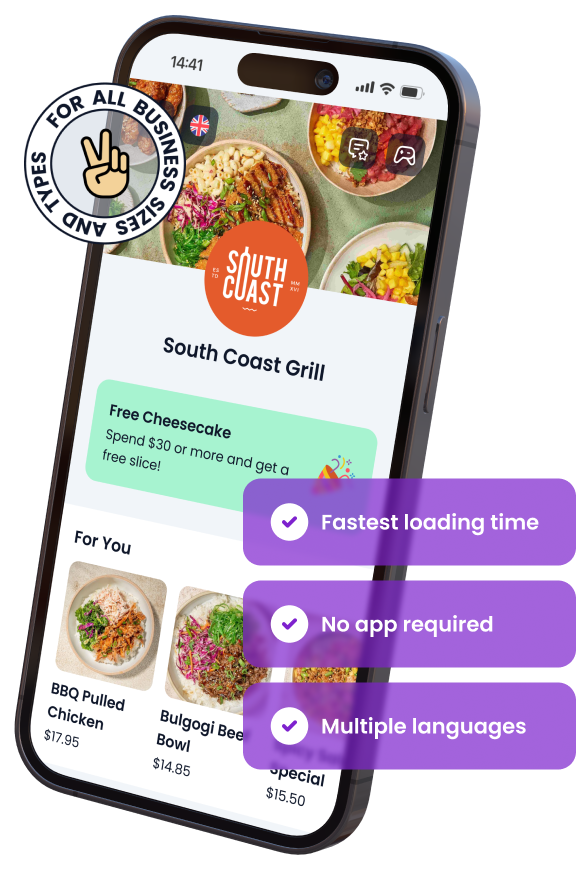
In This Article

Free AI Tools for Restaurants
TRY NOW ➜

Add allergen and dietary badges
Enhance your customers’ dining experience by providing clear dietary badges and labels for each menu item.


